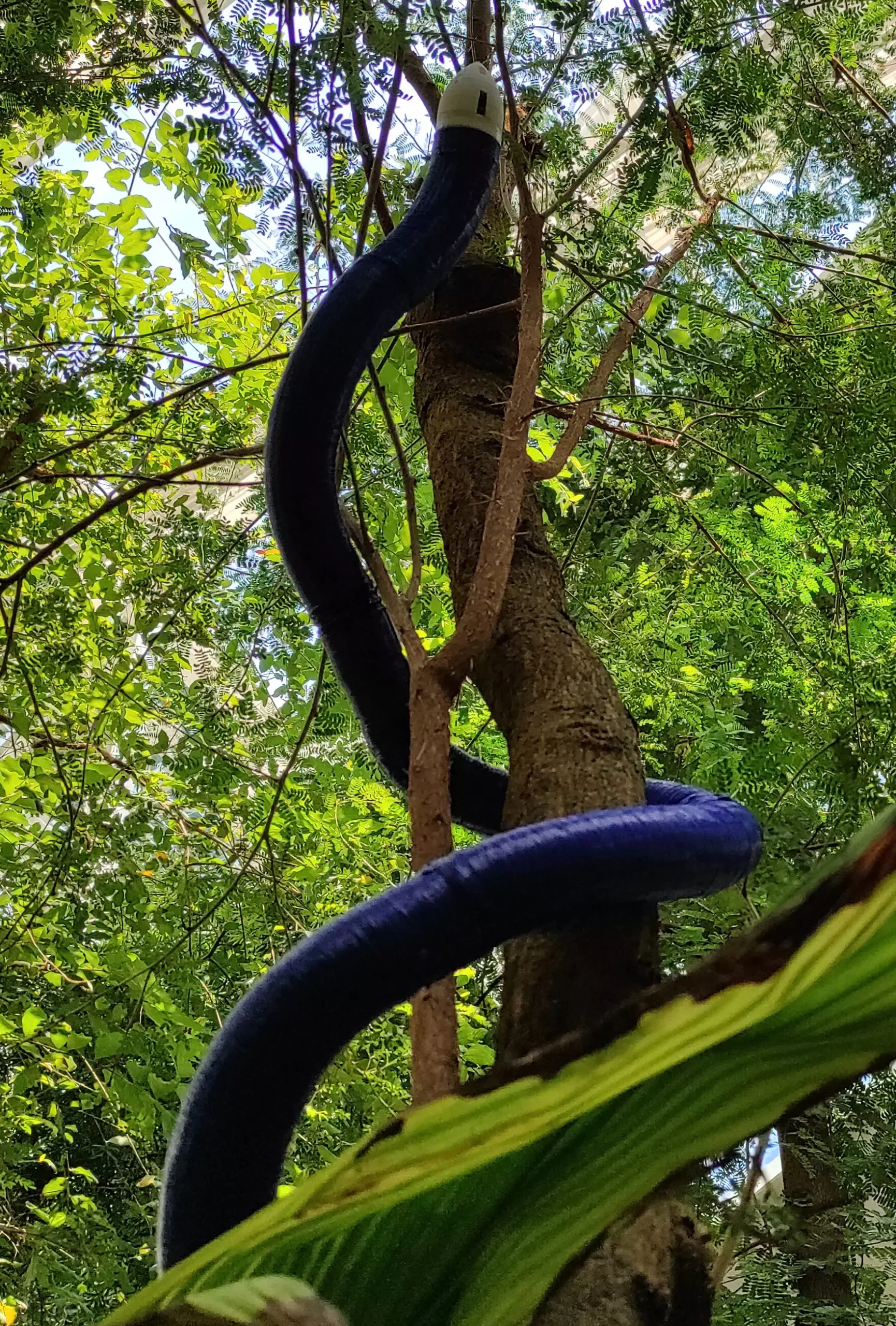In a remarkable breakthrough, researchers at Fondazione Istituto Italiano di Tecnologia, in Italy, and the University of Montpellier, in France, have developed an extraordinary robot that utilizes 3D printing technology to grow its own body. By combining the fields of robotics and 3D printing, the scientists have created a snake-like robot named FiloBot, capable of elongating itself and moving in a vine-like manner. This groundbreaking invention opens up a multitude of possibilities for the future of robotics.
The Design and Functionality of FiloBot
FiloBot is a unique creation with a spinning head and a flexible body. The head of the robot is equipped with a 3D printer that uses a plastic ink, enabling it to print additional body material as it spins. This process results in the elongation of the robot. At the opposite end of FiloBot, there is a base that contains the inkwell, a pump, and a power source. The ink is fed through a tube inside the robot’s body, allowing the printer to continuously produce material. The head of FiloBot also contains electronics that respond to signals from external sensors, enabling precise control over the printing process.
The Growth and Adaptability of FiloBot
One of the most remarkable features of FiloBot is its ability to grow in desired directions. By programming the robot, it can be directed to grow towards specific stimuli, such as light, or even against gravity. This unique capability allows for the robot to adapt and navigate challenging environments. The researchers envision using FiloBot for monitoring unstructured natural environments, constructing autonomous structures, assessing the risk of natural disasters such as avalanches or landslides, and even measuring pollution levels in hard-to-reach areas.
The development of FiloBot opens up a world of possibilities for robotics. Its ability to grow and adapt to various conditions makes it an invaluable tool for exploration and research. By utilizing FiloBot, scientists can monitor and interact with environments that were previously inaccessible. They can gather data, conduct experiments, and potentially discover new insights into the natural world. Additionally, the self-printing capability of FiloBot could revolutionize construction techniques, making it possible to create autonomous structures with minimal human intervention.
The successful creation of FiloBot marks a significant step forward in the field of robotics. It demonstrates the potential of combining different technologies to create innovative solutions. As researchers continue to explore the possibilities of self-printing robots, we can expect to see further advancements in the field. The ability to adapt and grow opens up endless opportunities for exploration, discovery, and problem-solving. With each breakthrough, we move closer to a future where robots not only mimic living organisms but also possess the ability to evolve and adapt to their surroundings.
The development of FiloBot represents a groundbreaking achievement in the field of robotics. By combining 3D printing technology with robotics, the researchers have created a snake-like robot capable of growing and adapting to various stimuli. This innovative approach has the potential to revolutionize how we explore and interact with our world. The future of self-printing robots is both exciting and promising, as we continue to push the boundaries of what is possible in the world of robotics.


Leave a Reply